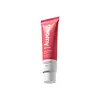What's inside
What's inside
 Key Ingredients
Key Ingredients

 Benefits
Benefits

 Concerns
Concerns

No concerns
 Ingredients Side-by-side
Ingredients Side-by-side

Water
Skin ConditioningGlycerin
HumectantXylitol
HumectantSodium Polyacrylate
AbsorbentDimethicone
EmollientCyclopentasiloxane
EmollientTrideceth-6
EmulsifyingDisodium EDTA
Niacinamide
SmoothingPEG/PPG-18/18 Dimethicone
EmulsifyingFructooligosaccharides
HumectantMannitol
HumectantSodium Hyaluronate
HumectantHexyldecanol
EmollientCaprylic/Capric Triglyceride
MaskingRhamnose
HumectantLaminaria Ochroleuca Extract
Skin ConditioningPyrus Malus Seed Extract
Skin ConditioningBrassica Campestris Sterols
EmollientTocopherol
AntioxidantChlorphenesin
AntimicrobialPhenoxyethanol
PreservativeParfum
MaskingWater, Glycerin, Xylitol, Sodium Polyacrylate, Dimethicone, Cyclopentasiloxane, Trideceth-6, Disodium EDTA, Niacinamide, PEG/PPG-18/18 Dimethicone, Fructooligosaccharides, Mannitol, Sodium Hyaluronate, Hexyldecanol, Caprylic/Capric Triglyceride, Rhamnose, Laminaria Ochroleuca Extract, Pyrus Malus Seed Extract, Brassica Campestris Sterols, Tocopherol, Chlorphenesin, Phenoxyethanol, Parfum
Water
Skin ConditioningCyclopentasiloxane
EmollientCetearyl Olivate
Sorbitan Olivate
EmulsifyingEthyl Olivate
EmollientPentylene Glycol
Skin ConditioningCoco-Caprylate/Caprate
EmollientPropanediol
SolventGlyceryl Caprylate
EmollientSodium Acrylates Copolymer
4-T-Butylcyclohexanol
MaskingBisabolol
MaskingTocopheryl Acetate
AntioxidantHelianthus Annuus Seed Oil
EmollientFucus Vesiculosus Extract
EmollientLecithin
EmollientHypnea Musciformis Extract
Skin ProtectingDimethicone
EmollientCentella Asiatica Extract
CleansingSodium Gluconate
Skin ConditioningCaprylic/Capric Triglyceride
MaskingGlyceryl Undecylenate
EmollientGlycerin
HumectantPalmitoyl Olive Leaf Extract
AntioxidantTocopherol
AntioxidantHydroxymethoxyphenyl Decanone
Skin ConditioningSodium Benzoate
MaskingPotassium Sorbate
PreservativeWater, Cyclopentasiloxane, Cetearyl Olivate, Sorbitan Olivate, Ethyl Olivate, Pentylene Glycol, Coco-Caprylate/Caprate, Propanediol, Glyceryl Caprylate, Sodium Acrylates Copolymer, 4-T-Butylcyclohexanol, Bisabolol, Tocopheryl Acetate, Helianthus Annuus Seed Oil, Fucus Vesiculosus Extract, Lecithin, Hypnea Musciformis Extract, Dimethicone, Centella Asiatica Extract, Sodium Gluconate, Caprylic/Capric Triglyceride, Glyceryl Undecylenate, Glycerin, Palmitoyl Olive Leaf Extract, Tocopherol, Hydroxymethoxyphenyl Decanone, Sodium Benzoate, Potassium Sorbate
 Reviews
Reviews

Ingredients Explained
These ingredients are found in both products.
Ingredients higher up in an ingredient list are typically present in a larger amount.
This ingredient is an emollient, solvent, and texture enhancer. It is considered a skin-softener by helping the skin prevent moisture loss.
It helps thicken a product's formula and makes it easier to spread by dissolving clumping compounds.
Caprylic Triglyceride is made by combining glycerin with coconut oil, forming a clear liquid.
While there is an assumption Caprylic Triglyceride can clog pores due to it being derived from coconut oil, there is no research supporting this.
Learn more about Caprylic/Capric TriglycerideCyclopentasiloxane, or D5, is a silicone used to improve texture of products and trap moisture.
D5 is considered lightweight and volatile. Volatile means it evaporates quickly after application. Once evaporated, D5 leaves a thin barrier that helps keep skin hydrated.
It is also an emollient. Emollients help soften the skin and prevent water loss. Silicones create a silky texture in products. D5 helps other ingredients become more spreadable.
Studies show D5 is safe to use in skincare products. We recommend speaking with a skincare professional if you have concerns.
Learn more about CyclopentasiloxaneDimethicone is a type of synthetic silicone created from natural materials such as quartz.
What it does:
Dimethicone comes in different viscosities:
Depending on the viscosity, dimethicone has different properties.
Ingredients lists don't always show which type is used, so we recommend reaching out to the brand if you have questions about the viscosity.
This ingredient is unlikely to cause irritation because it does not get absorbed into skin. However, people with silicone allergies should be careful about using this ingredient.
Note: Dimethicone may contribute to pilling. This is because it is not oil or water soluble, so pilling may occur when layered with products. When mixed with heavy oils in a formula, the outcome is also quite greasy.
Learn more about DimethiconeGlycerin is already naturally found in your skin. It helps moisturize and protect your skin.
A study from 2016 found glycerin to be more effective as a humectant than AHAs and hyaluronic acid.
As a humectant, it helps the skin stay hydrated by pulling moisture to your skin. The low molecular weight of glycerin allows it to pull moisture into the deeper layers of your skin.
Hydrated skin improves your skin barrier; Your skin barrier helps protect against irritants and bacteria.
Glycerin has also been found to have antimicrobial and antiviral properties. Due to these properties, glycerin is often used in wound and burn treatments.
In cosmetics, glycerin is usually derived from plants such as soybean or palm. However, it can also be sourced from animals, such as tallow or animal fat.
This ingredient is organic, colorless, odorless, and non-toxic.
Glycerin is the name for this ingredient in American English. British English uses Glycerol/Glycerine.
Learn more about GlycerinTocopherol (also known as Vitamin E) is a common antioxidant used to help protect the skin from free-radicals and strengthen the skin barrier. It's also fat soluble - this means our skin is great at absorbing it.
Vitamin E also helps keep your natural skin lipids healthy. Your lipid skin barrier naturally consists of lipids, ceramides, and fatty acids. Vitamin E offers extra protection for your skin’s lipid barrier, keeping your skin healthy and nourished.
Another benefit is a bit of UV protection. Vitamin E helps reduce the damage caused by UVB rays. (It should not replace your sunscreen). Combining it with Vitamin C can decrease sunburned cells and hyperpigmentation after UV exposure.
You might have noticed Vitamin E + C often paired together. This is because it is great at stabilizing Vitamin C. Using the two together helps increase the effectiveness of both ingredients.
There are often claims that Vitamin E can reduce/prevent scarring, but these claims haven't been confirmed by scientific research.
Learn more about TocopherolWater. It's the most common cosmetic ingredient of all. You'll usually see it at the top of ingredient lists, meaning that it makes up the largest part of the product.
So why is it so popular? Water most often acts as a solvent - this means that it helps dissolve other ingredients into the formulation.
You'll also recognize water as that liquid we all need to stay alive. If you see this, drink a glass of water. Stay hydrated!
Learn more about Water